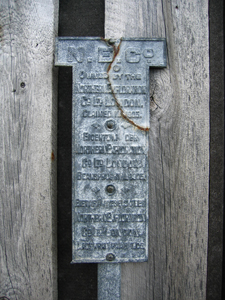The Northern Exploration CompanyBy Kristin PrestvoldThe Northern Exploration Company (NEC), which annexed large expanses of land in Svalbard, is engraved into Svalbard history. 
NEC’s land annexations were concentrated where the most profitable mineral deposits were thought to be found. The company was founded in 1910 and was most active in the years around World War I. The background for the activity was the numerous occupations carried out by Ernest Mansfield in Svalbard prior to 1910. NEC bought his land occupations in 1911 and started the construction of Ny-London and the promising marble quarry at Blomstrandhalvøya in Kongsfjorden. NEC owned and operated many mines and prospects in Svalbard, most of which were to exploit coal. Other mineral deposits were also prospected, such as zinc, asbestos, iron and marble. Optimism prevailed, despite frequent loss of capital in prospects that never materialized. They were big landowners, but produced close to nothing. This was the era of Neo-Industrialism and in Svalbard there was a Klondike-like atmosphere in which everyone was affected by the fervour for mineral deposits. Investment capital was readily accessible. The optimism and vitality of the NEC has left many cultural remains. The NEC annexation signs can be found in all the areas they were active, with text in three languages to make sure everyone understood this was NEC’s land. Transporting equipment to Svalbard was long, trying and expensive and the work seasons were short and hectic. The value of the buildings and equipment itself was often less than the cost of disassembly and transport back to the mainland. Installations were therefore often left on site and can today be seen as a witness to dreams for quick profit in enterprises that were discontinued after only a few years of trial operations. The 1920s meant the end for the NEC. In 1920, Norway claimed and gained sovereignty of Svalbard through the Svalbard Treaty (it came into force in 1925 with the Svalbard Act). Instead of reducing its activity as a consequence, NEC increased its share capital and gave notice about a land claim of about 10 000 km2 in Svalbard. The claim was later reduced and in 1925 they were granted ownership of 650 km2. At this time NEC was in a deep financial crisis and tried to sell property to improve the company’s liquidity. The Norwegian state and the NEC signed an agreement in 1925, but the actual sale did not take place until 1932, when the Norwegian state took possession of all NEC’s property in Svalbard for NOK 100 000. The price was very low and far from what the NEC had claimed, but the company went bankrupt in 1929 and had no choice but to accept the conditions. Updated May 2015 |
The Cruise Handbook is also available in book formHard cover with numerous pictures - 249 pages - NOK 249.00 Norwegian Polar Institute |
 Norsk
Norsk